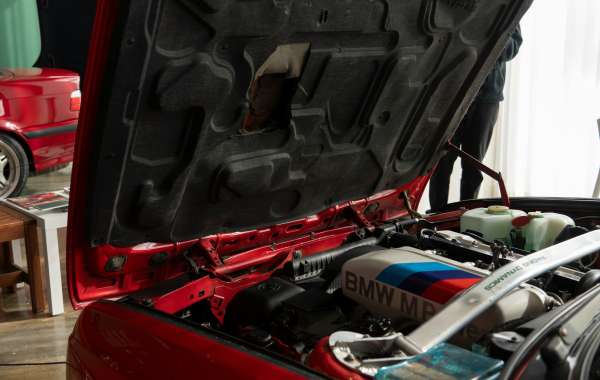Car enthusiasts thrive on adding performance upgrades to their cars, such as turbo accessories, aftermarket exhaust systems and more, in order to gain greater speed, performance and sound from their cars. One of the main performance parts considered in an air intake system.
An air intake system in a vehicle is a crucial component of the engine that facilitates the flow of air into the engine. Its primary function is to supply the engine with clean, filtered air that is mixed with fuel to create the air-fuel mixture needed for combustion.
Here is a breakdown of what it does:
- Air Filtration: The system includes an air filter that removes dirt, debris, and other contaminants from the air before it enters the engine. This helps protect the engine and improve performance.
- Air Flow: It channels the air from outside the vehicle into the engine's intake manifold. This ensures a steady and adequate flow of air, which is essential for efficient engine performance.
- Performance Optimisation: Some air intake systems are designed to increase airflow to the engine, potentially boosting power and fuel efficiency. High-performance air intake systems, like cold air intakes, can provide cooler air to the engine, which is denser and can improve combustion efficiency.
- Engine Management: The intake system works in conjunction with the engine's control unit (ECU) to manage air intake based on factors like engine speed and load, optimising performance and emissions.
A well-designed air intake system helps ensure that the engine operates smoothly, efficiently, and with maximum performance.
How do air intake systems improve the performance of a car?
Air intake systems can improve a car's performance through:
- Increased Airflow:
How: By allowing more air to flow into the engine, either through a more efficient design or higher-flow filters.
Benefit: More air means more oxygen for combustion, which can increase engine power and efficiency.
- Cooler Air Intake:
How: Cold air intake systems draw air from outside the engine bay, where it is cooler.
Benefit: Cooler air is denser and contains more oxygen, leading to better combustion and improved horsepower and torque.
- Improved Air-Fuel Mixture:
How: Better airflow can optimise the air-fuel mixture that the engine uses for combustion.
Benefit: An optimal mixture improves engine efficiency, performance, and fuel economy.
- Enhanced Throttle Response:
How: High-performance air intake systems reduce restrictions in airflow, allowing the engine to respond more quickly to throttle inputs.
Benefit: Provides quicker acceleration and a more responsive driving experience.
- Reduced Intake Temperature:
How: Some intake systems are designed to minimise the heat absorbed from the engine bay.
Benefit: Lower intake temperatures can enhance engine performance by preventing heat soak and maintaining cooler combustion temperatures.
- Increased Engine Efficiency:
How: By optimising the airflow and air-fuel mixture, some systems can help the engine run more efficiently.
Benefit: This can result in better fuel economy and reduced engine strain.
- Improved Sound:
How: Performance air intake systems often enhance the sound of the engine.
Benefit: Many enthusiasts appreciate the more aggressive or sporty sound that comes with a high-performance intake system.
By improving airflow, cooling the intake air, and optimising the air-fuel mixture, air intake systems can make a significant impact on a vehicle’s overall performance and driving dynamics.
What are the different types of air intake systems?
There are several types of air intake systems, each with its own design and purpose. Here are the main types:
- Stock Air Intake System:
Description: The standard intake system that comes with the vehicle from the factory. It includes an air filter, air ducts, and a resonator to minimise noise.
Purpose: Designed to balance performance, noise reduction, and fuel efficiency while meeting emissions regulations.
- Cold Air Intake (CAI):
Description: Positioned to draw air from outside the engine bay, where the air is cooler and denser. Typically features a longer, more direct path to the engine.
Purpose: Increases the volume and quality of air entering the engine, potentially improving horsepower and torque by providing cooler air.
- Short Ram Intake:
Description: A shorter intake system that draws air from within the engine bay. Often features a high-performance air filter.
Purpose: Improves airflow compared to the stock system, but may draw in warmer air from the engine bay, which can slightly reduce its performance benefit compared to a cold air intake.
- Ram Air Intake:
Description: Uses a scoop or duct to force air into the intake system as the vehicle moves forward, increasing air pressure and flow.
Purpose: Enhances air intake at higher speeds, potentially boosting performance by increasing air density.
- Hybrid Air Intake:
Description: Combines elements of cold air and short ram intakes. It may have a short ram design with a portion that draws air from outside the engine bay.
Purpose: Aims to balance the benefits of both cold air and short ram intakes, providing improved performance and flexibility.
- Aftermarket Performance Air Intakes:
Description: Custom or aftermarket systems designed for enhanced performance. They may include high-flow filters, smoother ducts, and other modifications.
Purpose: Focuses on increasing engine performance, improving throttle response, and optimising air-fuel mixtures.
Each type of air intake system has its own advantages and is suited to different performance goals and driving conditions.








